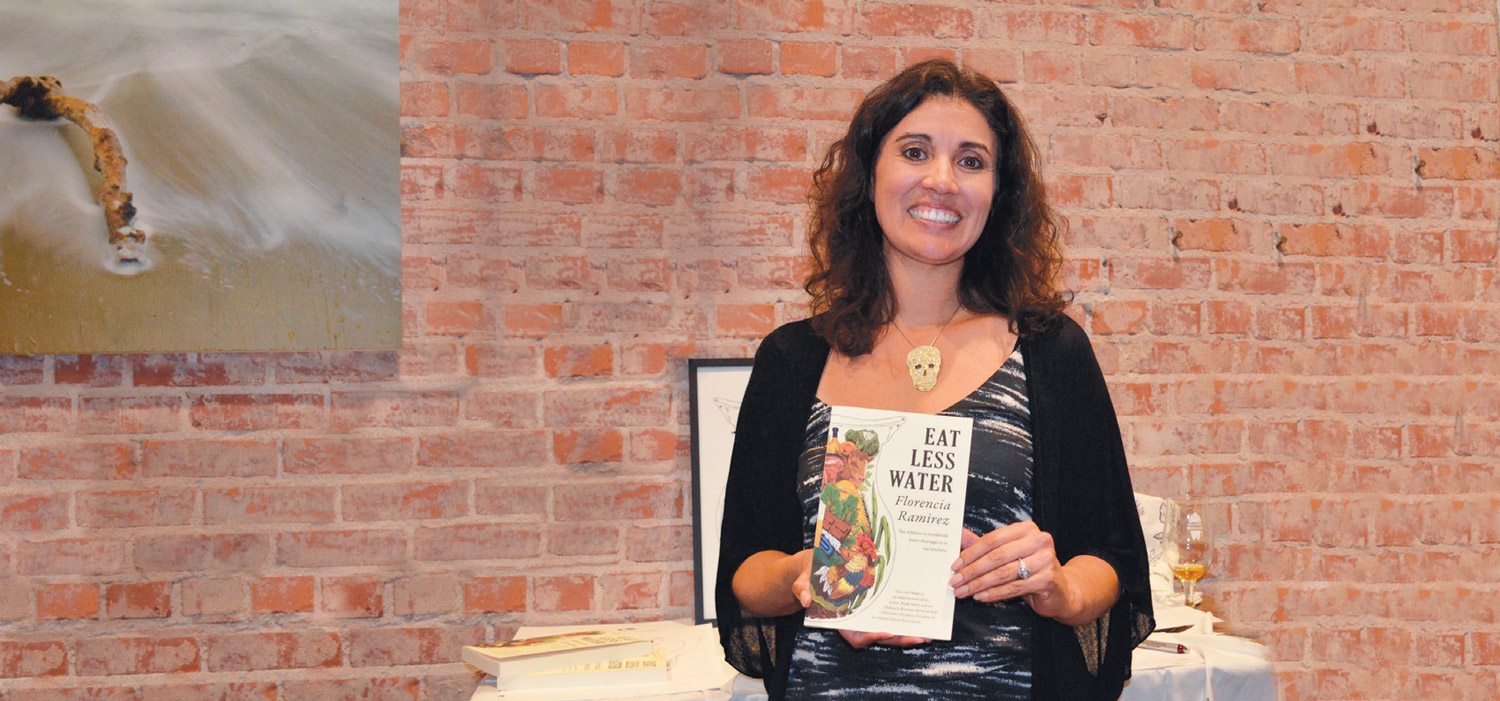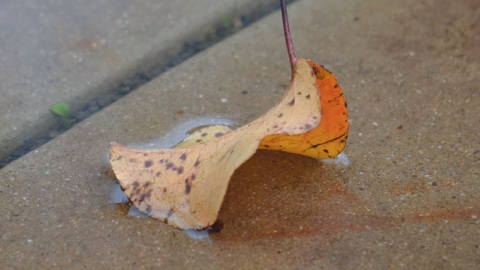A Thirst for Knowledge
We caught up with Florencia Ramirez of Oxnard between stops on her book tour for her newly published book, Eat Less Water (Red Hen Press, 2017). Ramirez is a policy researcher trained by the University of Chicago Harris School of Public Policy and passionate about protecting the health of people and our planet. Ramirez wrote “Don’t Just Conserve Water, Keep It” for Edible Ojai & Ventura County’s Fall 2015 issue.
Q: Eat Less Water is about so much more than just water. It’s an environmental book that touches on food waste, healthy eating and supporting local farms who work hard to make a living and be good stewards of the land. And it even has recipes. It’s exciting how you tie all these topics together through water. How did the connection happen?
A: My story began in the shower. During the 2007 drought, I read a full-page ad in the L.A. Times that offered tips to save water. They were the same tips that get recycled during every drought: Turn the water off when brushing teeth, water your lawn less and take five-minute showers. I already did the first two, but knew my showers were too long. I timed my next shower and began the idea of shower timers as a water conservation tool.
But here’s the thing: My focus on saving water was in the wrong room of the house. While the average American uses 100 gallons of water per day, we eat an additional 530 to 1,300 gallons of virtual water each day. Seven out of every 10 gallons of all freshwater on the planet is used to grow food, so if I wanted to dedicate myself to saving water, I needed to switch my focus to the kitchen and, by extension, to the farms and factories where 70% of freshwater flows.
What is your hope with Eat Less Water?
My hope is for the book to be like a pebble tossed into the stillness of water that grows wide circles. More specifically, my vision for the book is to reveal the connection between what we eat and the impact on rivers and lakes, to generate more business for farmers dedicated to growing food using farming methods that save our water resources, and to inspire policy change at the individual, farm, corporate and government policy level.
It was a multiple-year research project filled with visits to different farmers and food producers who, on the surface, don’t have a direct connection to water—but they do! What product’s water story was the most surprising to you? Why?
I was surprised during every stop on this journey. Paso Robles wheat farmer John DeRosier taught me how cover crops and crop rotation allow him to dry farm using little to no irrigation in a region where farms drill for water 1,000 feet below the surface. (One pound of pasta = 230 gallons of water.)
But I was the most surprised to learn that flooding rice fields, the normal practice in the U.S. and around the world, is unnecessary. Rice grown without flooded fields has lower arsenic levels, grows larger and uses 40% less water. Why do rice farmers flood rice fields? Kurt Unkel, the owner of the now-closed Cajun Grain Rice in Kinder, Louisiana, told me it was to suppress weeds. (One cup of cooked rice = 50 gallons of water.)
We had a wet winter in 2017 and in April Gov. Jerry Brown officially stated that California’s drought was over. How does that change our behavior with regard to our food?
It changes nothing. We remain in the same predicament. Half the world’s population will experience freshwater shortages, referred to as “water scarcity events,” by 2030, and groundwater levels continue to drop in California and around the nation.
The message of this book is bigger than any one drought period: Our food pantries represent rivers, aquifers, lakes from every part of the planet. In my pantry, I have rice from Vietnam, chocolate from Ghana, coffee from Guatemala, flour from Kansas, eggs from Ojai and lettuce from Oxnard. Each country, state, region deals with water scarcity issues ranging from not having enough (supply) to not having enough “clean” water (quality).
Food is the most significant user and polluter of water. If we are to be part of the global water solution, we must begin with our food choices, supporting farming methods that save water. We are connected to the world’s water with each meal.
So many of us don’t think about the water it takes to produce the food in our kitchens. That it takes 34 gallons to produce 1½ tablespoons of ground coffee was an eye-opener. What water footprint total surprised you most?
Chocolate. The water footprint for a pound of chocolate is 7,727 gallons—four times larger than a pound of beef. Chocolate is a prime example of food grown almost entirely with “green water.” Water footprint researchers color-code water based on the source. “Green” is the designation for natural rain and moisture. The solution to water shortages around the globe boils down to encouraging farm practices that use more green water. But while the assumption, especially from those of us who live in dry areas like California, is that water shortages are a result of limited supply, water scarcity is caused by a lack of water quality, too. Cocoa trees in the tropics require upwards of 80 inches of rain or “green water” to flourish, but chemical fertilizers and pesticides washed away into nearby rivers diminish the supply of clean freshwater resources for villagers. When we purchase organic chocolate, we support clean water for the farmers.
In your book, you give tips to protect our water and our environment, like teach the children in your life how to cook. What is the number one most important change you would recommend our readers make?
Eat less meat and dairy. The average American eats 270 pounds of meat, 250 eggs and 630 pounds of dairy a year, representing 27% of our total human water footprint. Livestock causes too many ongoing environmental disasters: water pollution, soil erosion, air pollution, deforestation, greenhouse gas emissions, dead zones and lowered groundwater tables.
In my kitchen, my meat and dairy is exclusively from small-scale pasture-based farms. The chickens and ruminant animals are rotated in fenced pastures; the pigs allowed to be pigs in a paddock. I prefer to buy direct from ranchers at my local farmers’ market so I can ask questions. Our questions let food producers know we are informed, and we care about our water resources.
What’s next for you?
My next book project is called In Search of Real Food in American Public Schools. My hope is to create a blueprint for parents, teachers, principals and students to improve upon our current food programs—both within the current school funding and regulations, and to reimagine a food system that supports small-scale farmers working to grow clean, nutritious food that’s good for our children and for the planet.
I’m also working on a smaller project, an Eat Less Water coloring book for young children. The coloring book will contain the beautiful drawings of plants and animals from Eat Less Water, accompanied by a short introduction to water footprints, water conservation and the connection between our food and water.







